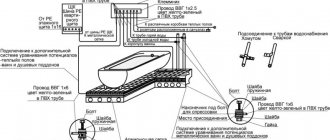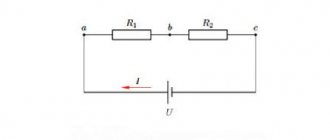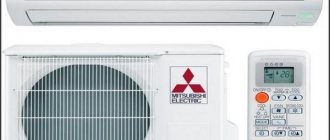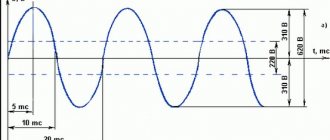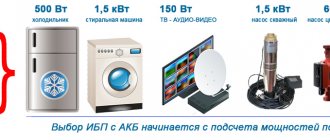Nowadays, smart home systems are becoming increasingly common on trading platforms. Someone knows well what they are and what they are needed for. But most people have only heard about them briefly and have a vague idea of their merits. Meanwhile, these technologies can significantly change the daily life of every home owner. Our review is intended to slightly expand the understanding of this concept for ordinary people and tell us what a smart home is.
What's happened
Smart house - this is how this phrase sounds in English. This is a kind of home automatic complex, which contains almost all household appliances controlled by one system.
This system is not called “smart” for nothing. She has a brain - this is her own personal program, under the guidance of which all devices operate, performing service functions.
And such an electronic “brain” expands the capabilities of a smart home many times over and provides a lot:
- Remote control and monitoring of the entire electrical system and electronic devices located in the house.
- Programming household appliances to suit your preferences (for example, turning on lights and heating devices on a timer).
- Configuring all devices to operate according to a specific scenario. This means - if this happens, then this needs to be done. Well, for example, the sun has risen and the temperature in the room has risen, which means that the air conditioner needs to work. Myself! Automatically!
- Control the same household devices using voice commands.
And this is only a small part of what smart house technology can provide.
For the average user of such systems, there is no need at all to learn the basics of programming. It is enough to determine how all home devices will communicate with the head unit - Bluetooth, Wi-Fi, ZigBee. And the home owner just has to find and install special software on his personal smartphone or tablet and use all the amenities.
As we said at the beginning, this is not a new technology. Many people know or have heard about it. The only thing that stops many is - are these smart home technologies really necessary? Let's add some more benefits to these systems. It also becomes possible to manage:
- Lighting;
- Video surveillance;
- Climate control equipment;
- Household appliances;
- Reasonable energy saving;
- Protection against leaks, gas, fire;
- Global security capabilities;
- The service life of electrical equipment is extended;
- Extremely maximum level of comfort, which is chosen by the users themselves;
- Economical use of all household resources;
- No subscription fee.
Working principle
The functioning of an automated home from an engineering perspective is based on the technology of so-called “distributed intelligence”. It is important to know what this phrase means:
- Control of a computer (controller, hub), which collects and processes signals coming from various sensors located around the house or on the street
- Electrical wires or radio waves (via zigbee) transport signals to the necessary hardware elements
- A variety of sensors record any changes inside and outside the house and provide information to the central device
There are variations of a smart home without a center block, that is, each device independently determines “its own” signals. The slightest changes occurring in one smart subsystem are instantly taken into account by another electronic link, and an immediate response occurs:
- Each individual node has its own small intelligence
- All links are united into a common network
- Between autonomous devices there is a constant exchange of information, dependence
Nikolay M., expert: “such a technological solution significantly increases the reliability of a smart home, makes the electronic design more flexible, and expands the working potential. Each equipment is capable of simultaneously receiving and transmitting commands, thereby ensuring high reliability of the entire process.”
The breakdown of a separate subsystem does not in any way affect the performance of the structure as a whole, since the signal is instantly duplicated by the neighboring element. The smart network operates absolutely without interruption; the quality of work is not affected by furniture, walls of the house, or other factors. To increase coverage, just add new elements.
Integrated equipment and online services
This group includes video cameras, web services that have an open API (multimedia devices, modern equipment, projectors, etc.) that can be controlled remotely using a control panel.
What does it consist of?
Globally, all smart home systems consist of several elements:
- Central controller or hub. It is he who combines all the elements of a “smart house” into a single complex.
- A program for a smartphone or PC, for example, such as Smart Things, with which you can quickly and easily make the necessary system settings, start or stop various scenarios, turn on or off smart household appliances and lighting.
- Various types of sensors. These little helpers collect information from around the house - temperature, operation of household appliances, security alarms - and send it to the central control device.
- Executive devices. All commands coming from the hub are executed by these actuators. Simply put, these are various types of externally controlled relays that can automatically turn on/off home appliances.
- Smart home appliances. It is clear that an ordinary electric kettle cannot turn on according to a schedule. But there is a whole class of household appliances that can work according to the owner’s commands. For example, a smart refrigerator can track the expiration dates of products, and not only - it also has other interesting functions. This also includes various types of sockets, switches, air conditioners, leakage protection systems, and so on.
Comfort, as we see, is ensured, but this is not the main advantage of smart systems. The main advantage is that they provide a guaranteed opportunity to reduce the risks of larger losses:
- Home Flood;
- Gas leaks;
- Smoke;
- Fire;
- Unauthorized entry into a home or simply robbery.
Intelligent control system diagram
Any set of equipment for a smart home is similar to a construction set from which you can create anything you want.
Therefore, it is unlikely that a user who wants to assemble any kind of it at home will find a suitable scheme for his living conditions. For example, a standard option for a 3-room apartment or for a house of a certain area and number of floors.
Any premises have their own characteristics, and their owners have their own preferences and budget. As a result, various control bodies and executive elements are used
You will have to draw up the necessary diagram yourself or with the help of specialists. Exceptions may be the simplest smart home options or decentralized systems, which are also not very complex.
An example would be a diagram for installing a dimmer in the electrical network and a motion sensor working in tandem with it, since it is standard and therefore the same in all cases.
Those who want to assemble an intelligent system on their own should know that they should have certain skills and knowledge, and in various fields. For example, the photo shows a graphical interface that allows you to manage, control, and obtain the necessary information. And it is created for each case separately, using the programming method
But even in this and similar cases, it is recommended to contact specialists. The reason is that all systems operate on electricity and some serious errors can lead to fires, electric shock, and damage to expensive structural elements.
Where can I buy
You can purchase devices for a smart home either in a specialized store or online in an online store. In the second case, the budget option for purchasing products on the Aliexpress website deserves special attention. For some products there is an option for shipment from a warehouse in the Russian Federation; they can be received as quickly as possible; to do this, when ordering, select “Delivery from the Russian Federation”:
| Wireless Home Security Alarm System | Tuya gas leak sensor, with Wi-Fi | Motion sensor SONOFF SNZB-03 ZigBee |
| Xiaomi Aqara Gateway M1S hub with sensors for smart home | Xiaomi smart home kits | Tuya smart home kit, hub, sensors |
Types of device communication
Since all home control systems use electricity in any case, there are two classes of systems:
- Wired.
- Wireless.
Initially, all security systems were wired. Despite the complexity of installation and commissioning, such systems had one undoubted advantage - reliability.
Of course, nothing prevents the use of a wired circuit in smart home systems, but a more modern option is wireless.
Wireless systems are simply more profitable in terms of time to deploy and connect the entire complex. In addition, if installing a wired complex cannot be done without the services of professional specialists of various kinds, then it is quite possible to deploy a wireless system in your home yourself, as they say, with your own hands.
In addition, the range of various wireless sensors and automated actuators is constantly expanding. Therefore, adding a new device to your “smart house” will not cause significant problems.
Of course, there are certain inconveniences of systems of this class:
- The quality of the radio signal can be affected by both electrical interference and weather conditions;
- Periodic checking and replacement of batteries.
Advantages and disadvantages
An automated smart home wireless network has a fairly extensive list of advantages:
- Installs and configures in a couple of minutes. There is no need to lay cables, which significantly reduces the cost of consumables
- No significant damage to the finishing of the home. The wireless system requires virtually no installation and construction work
- Flexible network. The absence of cables eliminates the binding of interior items at home, project work groups to a specific location
- Flawless operation of sensors from any point. The electronic complex allows you to receive the most accurate information about the condition of each object
- Easy expansion of system capabilities. Installing additional touch sensors does not affect the interior in any way
- High operating speed and information protection. Wireless control has more secure protocols that offer high-speed functionality
- Mobility. The wireless smart home can be easily dismantled and moved to another home
- Multitasking. Performs any assigned tasks, flawlessly maintains devices and communications connected to the system, and significantly simplifies the operation of household appliances
Flaws
Despite a whole list of advantages, an automated home has certain weaknesses, which include:
- Quite a high price for equipment, installation, configuration and service
- Installation of additional sensors, transducers, and cables with wired variations causes additional hassle. Sometimes considered a problem.
- The uninterruptible power supply must match the required power, which allows the device to well withstand the load of devices connected to the system. If a generator is used, a separate room is allocated for it, in which sound insulation must be improved
- Problems arise with the integration of equipment, especially if the devices are from different manufacturers and produce errors. If there is a problem, restoring the system is often difficult
- Rapid “moral” aging of electronics. Even the most modern expensive devices, against the backdrop of rapid improvement and the creation of better modifications of devices, become obsolete in a short time
- Sudden overheating of the central controller leads to failure of the entire system
Scope of services
You now know the main advantages of a smart home, but what volume of services is needed first?
For apartment owners, most likely, a smart home system plus standard equipment will be relevant. Then it becomes possible to control:
- Electric lighting - turning on/off or adjusting the light flux.
- All electrical outlets.
- Warm floor systems.
- Smart curtains.
- Gas, water, and motion leakage sensors.
- Air conditioning.
- A set of multimedia systems.
The smart home system for a country house or cottage can be supplemented with:
- Installation of a video intercom.
- Heating adjustment.
- Automatic watering system.
- Control of the entrance group of gates and roller shutters.
- CCTV cameras.
- Electronic locks.
How it works
All smart house systems differ in their basic functions. Depends on the set of devices that are supplied in the store kit. But in any case, the possibilities of these systems are limitless.
Typically the basic package includes:
- lighting control;
- door/window opening sensors;
- smart plug;
- security alarm.
More advanced systems can be initially equipped with:
- intercom;
- climate control;
- fire sensors;
- control of water and gas leaks.
Let's look at an example of how such a system works.
For any element of the system, you can set an operation scenario. That is. If (select a condition), then (something needs to be done).
Eg. You come home from work at say 20:00. You open the door and turn on the light.
The control system for the entire smart home can be easily programmed to turn on the lights in the hallway automatically using a timer. A man enters the house, and the light in the hallway is already on.
What if the house warmed up during the day? Again, automation and control software will come to the rescue. If you attach a temperature sensor to the system, it will be able to send the room temperature to the controller. And if the temperature threshold is exceeded, the system will turn on the air conditioner itself.
Thus:
- the level of comfort increases;
- safety increases;
- energy is saved.
All this is possible with a smartphone and a special application.
Imagine scenarios like:
- Turning on the kettle in the morning.
- Operation of window blinds.
- Automatic garage door opener.
- Automatic watering of the garden.
We advise you to read: how to make an automatic garage door with your own hands, different solutions are considered.
Even a robot vacuum cleaner can start working without your participation and will clean the whole house when you arrive!
As you can see, the installation of such a complex is quite justified.
Selecting devices: personal experience
Vadim Eremin, head of the Gadgets and Innovations department at M.Video-Eldorado
Before choosing devices, you need to decide on the tasks that the smart home will solve. I needed to mainly secure and partially automate a country house. Here are the devices I settled on:
The simplest gadget I started with is a smart light bulb
. Since ceiling lights are connected directly to the mains, you just need to screw the lamp into the socket.
Smart bulbs allow you to adjust the light brightness, color and color temperature. Thanks to LEDs, they are incredibly energy efficient and can last over 10 years.
Of course, lamps can be made even smarter. For example, by inserting a motion sensor into the circuit.
Smart light Rubetek RL-3103 1990r.
Device examples:
- Xiaomi Mi LED Smart Bulb
- TP-Link LB-130
Temperature and humidity sensors .
When I go to the dacha, I check the temperature in the house and, if necessary, I can set the necessary parameters. Remote control is especially convenient for maintaining minimal heat to prevent pipes from freezing in winter. By including this sensor in a smart home circuit, you can also automate the startup of a humidifier, air conditioner, heater, air washer and other climate control equipment.
Device examples:
- Xiaomi Mi Temperature and Humidity Monitor
- Hommyn TS-20Z
- Rubetek RC-3601
Door and window opening sensor .
Of course, safety comes first. Contact sensor attached to window frames and doors. Although its main purpose is to report unauthorized entry, the sensor is useful, for example, to command the air conditioner to turn off when a window is opened. At our dacha we have several sensors on each floor. If someone tries to break into the house, I will receive a notification on my smartphone. It is also convenient to connect to a security camera and activate an alarm to scare away thieves and signal to neighbors.
Smart home Perenio Door/window opening sensor (PECWS01) 1690 RUR.
Device examples:
- Redmond SkyOpen RSO-31S
- Rubetek RS-3210
- Xiaomi Mi Window And Door Sensor
- Hommyn DS-20-Z
- Perenio PECWS01
- Ezviz T6
Smoke detector
. Installed in the living room with a fireplace. I use it in conjunction with a temperature sensor. It provides fire safety by detecting smoke. In autonomous mode, it can act as a fire siren and, in addition, give a command to turn off electrical appliances in the event of a fire.
Smart home Perenio Smoke sensor (PECSS01) 2990 RUR.
Device examples:
- Perenio PECSS01
- Rubetek KR-SD02
- Hommyn SS-20-Z
Water leakage sensor . It belongs in the bathroom, under the kitchen sink, next to the washing machine or heating radiator - in short, wherever a leak may occur. A flood is a serious matter, and these sensors are best installed with electromagnetic valves. In case of trouble, the sensor will command the tap to turn off the water.
Device examples:
- Ezviz T10
- Rubetek RS-3220
- Redmond SkyWater RSW-81S
- Hommyn WS-20-Z
- Perenio PECLS01
Motion Sensor . Registers the movement of people and animals along thermal waves. Does not react to dogs and cats. The device can be screwed onto one screw or glued to the wall with double-sided adhesive tape. One battery lasts approximately 2-3 years, depending on the frequency of operation. The sensor is so compact that it is almost invisible in the hallway and bathroom.
Device examples:
- Perenio PECMS01
- Rubetek RS-3203
- Xiaomi Mi Motion Sensor
- Redmond SkyMotion RSM-41S
- Hommyn MS-20-Z
The functionality of such sockets is quite wide. Thus, Hommyn PL-20-W, Rubetek RE-3301 and TP-Link HS100 can turn on electrical appliances on a timer, for example, during the most favorable tariff. And, of course, they collect statistics on energy consumption.
You can also use the Rubetek RE-3312 smart relay - you can connect anything to it, from an oven to a heated floor.
There are also devices built into the system without smart sockets. In our kitchen we have several devices from the Redmond ecosystem on the Ready For Sky platform, in particular, a smart kettle and a multicooker. Cooking porridge without getting out of bed, or boiling a kettle without looking up from the lawnmower is as easy as shelling pears.
And now the most important thing
There are many manufacturers, and even more sensors, sockets and light bulbs. They all use different technologies, and to combine them into one system, you will need an additional device - a gateway. It plays the role of the center of the network, collects data from all sensors, sends it to the cloud for access via a smartphone, and redirects commands between devices.
But there is also a problem. There is no single standard for combining different devices into one system. Therefore, you will have to either settle on one manufacturer with its ecosystem, or build a smart home using an IoT router that supports several protocols at once: Wi Fi, Z-wave, Zigbee, Bluetooth - for example, Rubetek CC1.
Voice control of devices. Just say “turn on the light” and the light will turn on, even if you are on the other side of the Earth
In order not to fool yourself with protocols and gateways, the easiest way is to buy a ready-made set of solutions for a smart home. For example, the Perenio PEKIT01 kit includes a gateway, a smoke sensor, a door sensor, a motion sensor and a leak sensor. The Rubetek RK-3515 kit includes the same thing, except for the motion sensor. Hommyn Anti-leakage Pro KS-32-WZ includes leakage sensors, electric valves, relays and a gateway.
I still have plans to test several smart devices; perhaps the most promising ones will appear in our assortment.
Lock
I started selecting a simple option so that it could be easily installed without upgrading the door itself. The Danalock V3 model is installed instead of the lamb, i.e. on the back of the door there is a regular cylinder, with this installation no one will guess that you have a smart lock. The lock supports control via Z-Wave and Bluetooth. This allows you to give temporary access to the lock to your relatives or friends. In addition to Danalock V3, I would install a Fibaro Door Sensor 2 door opening sensor, now when the door is closed, the lock automatically closes after five seconds.
Safety
Smart home security functions protect the homeowner from many emergency situations. For this purpose, the set of devices has been supplemented:
- CCTV cameras.
- Automatic door and gate opening systems.
- Security alarm.
- Emergency protection kit. If you left the oven or iron on, then such appliances will be turned off automatically. Fire and smoke sensors will report an emergency situation and the fire alarm will be activated. The system also recognizes gas and water leaks using detectors and can send an alarm signal to the home owner and duplicate the alarm to the control panel of the relevant services.
The smart home system is designed to guarantee both personal safety and human health. For this purpose:
- The perimeter is constantly checked for the integrity of windows and doors;
- Can imitate the presence of the owners in the house;
- Constant control over the entrance to the apartment;
- Monitoring by CCTV cameras of the area surrounding the building;
- Function of automatic switching on of lighting both inside the building and around its perimeter from the outside in case of penetration;
- Controls the movement of protective blinds;
- Sends an alarm call to the security console;
- All CCTV cameras can be connected to the Internet;
- Equipping your home with fire and smoke alarms;
- A set of video surveillance of the child’s condition, if the nanny on duty remains with him.
Minimum set of equipment
According to Ilya Kovalchuk, the minimum set of equipment, first of all, should ensure security, the ability to remotely monitor the cottage using video surveillance or alarm and motion sensors, as well as the ability to control heating. Thus, the technology will protect against theft and emergency situations.
Andrey Nazarenko:
– If a system can independently change its status, then it can be considered smart.
The main purpose of the technology is to increase the level of living comfort. This also includes ease of control: room lighting, minimization of equipment control panels, optimal operation of all engineering systems of the cottage in order to save energy.
Heated floors that turn off for the whole day when you leave for work and turn on an hour before you return, thereby saving energy, can be called “smart” heated floors.
Ekaterina Koroleva:
– There is a package of minimal functions that gives the system the right to be called a “Smart Home”. It includes two or more functions that can be controlled from a single interface:
- water leakage control;
- security and fire alarm system;
- gas leakage control;
- light control;
- climate control;
- voice notification.
Ilya Kovalchuk:
– “Smart home” also refers to the simplest monitoring and control systems: GSM sockets, emergency warning systems. In my opinion, this can be called any control or monitoring scheme built on the basis of high-tech equipment that brings real benefits to its owner.
Modern technologies and materials provide the opportunity to gradually increase functionality, which allows you to start small and subsequently create a complex and multifunctional automation system.
Ilya Kovalchuk:
– One controlled outlet (which includes a heating device) can be called a “Smart Home” at a stretch, but for some it can really make life easier, save on electricity costs, and help make their life more comfortable even in an apartment. In the future, it may become part of a more complex scheme.
Such flexible customization allows you to implement any solutions.
Ekaterina Koroleva:
– The possibilities are endless. The functionality can only be limited by imagination. Simply put, all devices that have an “on” button or "off" – can be automated.
Popular kits
The automatic control system for a smart home is, by and large, still in a state of development. This is one of the reasons for the lack of rush demand for existing similar devices, both throughout the world and in Russia. But in order to keep abreast of the latest trends and make a choice, we will select several models and tell you what functions they can perform. Of course, in addition to ready-made kits, there are various other possibilities, for example, using an affordable Arduino Mega minicomputer board as control modules. A more powerful Raspberry Pi 4 processor can easily cope with the task of home automation. In this case, the system’s actuators and sensors will need to be selected independently.
FIBARO Starter Kit
Our rating of smart things opens with the Polish FIBARO Starter Kit.
The basic set consists of:
- Fibaro home controller;
- wireless control module for numerous consumer electronics;
- sensors: air temperature, humidity, leaks, smoke, movement.
Such a starter kit in Russia will cost between 45,000–47,000 rubles. It can be cheaper if you buy only a controller at a price of 30,000 rubles. Additional elements can always be purchased on the Aliexpress trading platform, and not because they are better there. No - they are much cheaper there.
The entire kit can be installed and connected by hand according to the attached connection diagram.
GAL SH-1000
Our rating of home systems continues with the smart house GAL SH-1000 kit. The set is quite affordable. At a price of 3000–5500 rubles, you shouldn’t expect any special miracles from it. Actually, this is not a smart home yet, but the initial stage of an automated security system.
He will be able to:
- will report an attempt to break into a home or garage;
- will notify you if your upstairs neighbors have flooded your ceiling;
- will warn you about a power outage.
The capabilities of the system can be expanded by purchasing additional sensors.
But it must be said that remote control of the GAL SH-1000 is impossible. The device is designed to warn the owner about an emergency situation via GSM mobile communications and a 2G data channel. A push notification is sent to the owner's phone and three other registered users. Which is of course convenient, since each family owner, after receiving an incoming notification, will be able to find out about the problem that has arisen and react in time.
GAL SH-1000 is better suited for those people who want to understand for themselves what a smart home is in principle and what it is.
Xiaomi Smart Home 2 Full Kit
And the end of our unique rating is a brand from the cell phone company Xiaomi - the Smart Home 2 Full Kit system.
The starter kit consists of:
- central controller;
- sensors: motion, door opening, temperature;
- "smart plug"
The basic kit is small, but it can always be expanded. And we must take into account that this is a full-fledged Smart house, since this system is capable of connecting to household appliances and controlling them. The main thing is that home electronics have a Bluetooth or Wi-Fi module on board.
The smart socket included in the starter kit can control the on/off schedule of any equipment connected to it.
The Chinese system is controlled remotely using a smartphone. You need to find and install special software on your phone, either for Android or iOS.
The program is distributed absolutely free of charge. If you cannot find it, they will help you do it in the official store of the mobile operator.
The price of the basic Xiaomi Smart Home 2 Full Kit is quite affordable - from 4,000 to 5,000 rubles.
The capabilities of the system have no limits, due to the acquisition of additional sensors.
Self-installation of the system will not cause any difficulties, so the complex can always be expanded and configured with your own hands.
Ready solutions
Stores offer the purchase of electronic variations of ready-made smart home complexes with different technical functionality of the following options:
- Wired solutions
- Wireless network type
- Centralized complexes
- Non-centralized devices
Among the popular modules of this category, it is necessary to note the ability to manage almost all housing systems and communications:
- Heating equipment
- Gas appliances
- Water supply devices
- Electricity system
- Lighting fixtures
- Alarm equipment
- Fire safety
- Video surveillance devices
- Control of access to private territory
- Analyze the degree of probability of an emergency situation
Today, ready-made solutions are equipped with all the necessary devices that provide versatile functionality of a smart network (controller, relays, sensors, video cameras, power supply battery, sensitive microphones, thermostats, Wi-Fi router/GSM modem). In any case, the specific configuration of the ready-made solution model depends on the brand, manufacturer, as well as the cost of the complex (cheaper or more expensive). A popular solution on the market is Alice, produced by Yandex. Of course, solutions will cost differently. Which one to choose?
| Name | Manufacturer country | Key Features | Price (rubles) |
| Xiaomi Smart Home Suite | China | The device is equipped with the following elements:
| 5 000 |
| HDL Buspro | China | The complex has fundamental mechanisms:
| 12 000 |
| Rostelecom | Russia | The Russian security project is of high quality and is represented by three complexes:
| 11 000- 17 000 |
| Smart Home | Russia (Redmond company) | All “Smart Home” product items from the global brand Redmond are coordinated via Bluetooth via a smartphone or tablet. For remote control the following is used:
| 6 000- 10 000 |
| Vstarcam E27AR-TZ1V | China | The home project has the following elements:
| 9 000 |
| NooLite Mini Kit | Belarus | The smart network is designed to control lighting devices. Can be connected to microclimatic devices, multimedia equipment, water heaters. | 14 000 |
| Fibaro | (Poland) | The wireless complex, supported by Apple HomeKit, is equipped with the following mechanisms:
Each sensor is equipped with its own thermometer. | 13 000 |
| Wulian Smart Home | China | The smart grid includes:
| 12 000 |
| Ajax StarterKit Plus | Ukraine | Wireless powerful security kit:
| 25 000 |
| Ezviz BS-113A | China | The project is positioned as a basic design for apartments. The package includes:
| 13 000 |
See also: manufacturers, suburban solutions, home solutions, smart equipment, ecosystem options
Advantages and disadvantages
Now we will look at the pros and cons of a smart home. As a matter of fact, we have already discussed all (or almost all) the advantages of such systems. Now it remains to find out whether there are any disadvantages of a “smart home”.
Minuses
Of course, there are disadvantages and there are plenty of them:
- Price. Those kits that we have already mentioned are the initial kit, so to speak for the seed. A full-fledged system from Russian suppliers ranges from $5-15 thousand. This is if you have an apartment or a small country house. A full-fledged system, initially competently designed and correctly installed by a reliable company, will reach several million rubles!
- Installation of a smart home system. In Russia there is not such a large selection of companies installing large-scale systems. While Western companies offer a ready-made system, ours assemble it piece by piece. And replacing a broken sensor is also not easy. Not all elements may be compatible with each other.
- Let's not forget, this is still a complex system and components for a smart home may well break. And if it so happens that one component of the system “flies”, it is more likely to pull other elements along with it.
- Expediency. After all, these complexes were initially designed for use in country houses with autonomous heating. And in this case, such an investment is justified. But our apartments have centralized heating and there are no savings here.
- Uninterruptible power supply. In our reality, periodic blackouts are a common thing, and ensuring uninterrupted power supply is also a different story. Especially if this is a country option. It's possible, but difficult.
- Be prepared for the fact that in a few years your kit will become outdated and finding components will not be as easy as before.
- Safety. Despite the fact that this is the main purpose of such systems, users often notice security vulnerabilities. The owners themselves are partly to blame for this. The owners of the house do not have enough imagination to come up with a strong password. It turns out to be short and simple, for example - your wife’s maiden name, dog’s name, year of birth - these are standard passwords. It is clear that it will not be difficult for an attacker to guess the password to the security system and enter the smart home.
Undoubtedly, Smart house has more advantages than disadvantages. This technology is under active development and these kits are not in demand everywhere. In America, about 20% of private homes are equipped with such complexes. There are no such statistics in Russia, but most likely the figure will be much lower.
Frankly speaking, making a choice in favor of a smart home complex or living the old-fashioned way is a choice everyone makes for themselves. These systems are under constant improvement, and manufacturers are continually working to identify and correct deficiencies while adding new features and options.
Question answer
What is needed to connect a “smart home” in the card?
For the minimum set you will need: - gateway; — a set of sensors; — a set of actuators; — a control application installed on a smartphone or tablet.
Should all devices be from the same manufacturer?
It is highly desirable, since they are adapted to interact with each other.
How autonomous are wireless sensors?
They are powered by a battery that lasts for one and a half to two years.
How does the simplest smart home scenario work?
One simple example is a humidity sensor and exhaust fan in a bathroom. As soon as the amount of moisture exceeds a specified threshold, the hub starts extraction until the parameters are normalized.
What is the ZigBee protocol?
This is a special shortwave communication. Of the familiar protocols, it most closely resembles Bluetooth, but is designed with low power consumption over a long operating time.
What will smart homes be like in the future?
From many sources we see that the development of smart home and automation systems is in full swing and therefore we can even predict which path the development of such complexes will take:
- They will switch to voice control of their smart home with support for most languages;
- Economical consumption of electricity in the house;
- Automatic adjustment of water pressure and heating system;
- Automation of all consumer electronics;
- An alternative to a home personal computer.
Installation features
Ilya Kovalchuk:
– There are many systems and protocols designed to implement Smart Homes. Essentially, any protocol designed for automation can be used. From industrial RS-485 protocol to regular Wi-Fi.
At the moment, the most popular control protocols are those designed specifically for home automation and, for the most part, wireless, that is, they do not require laying a large number of wires, global changes in electrical wiring, etc.
The basis for a “Smart Home” can be an ordinary personal computer, and many controllers are devices with operating systems of the Linux family.
Andrey Nazarenko:
– The optimal option for building a “Smart Home” is when all devices exchange data with each other via cable using the KNX protocol.
KNX is a single unified international data exchange standard designed for automated control systems.
Many developers pre-lay the cable into the walls. In the future, this makes it possible to install equipment without costly alterations to the finished interior.
Ekaterina Koroleva:
– The main requirement for equipment is its reliability. Also, the equipment must be flexible for programming, functional and have an acceptable cost.
If you plan to use the Smart Home system in your cottage, then you need to think about it when designing all engineering systems.
The system installation process is divided into the following stages:
- At the stage of rough work, all communications are laid, incl. - and wires.
- At the stage of completion of finishing work, all necessary equipment, sensors, automation cabinets are installed, they are configured and the system is programmed.
- Next comes commissioning and commissioning of the system.
You can equip any home with a Smart Home system using equipment that operates via a radio channel. But such equipment does not provide a 100% guarantee of command execution. And if the owner wants to automate the facility after renovation, then all communications can be hidden in a false ceiling or in the floor.
Because A “smart home” depends on electricity; special attention should be paid to the installation of the electrical network.
Ilya Kovalchuk:
– All the equipment necessary to create “Smart Homes” is designed for standard 220 V networks. Thanks to wireless equipment, any existing cottage can be made “smart” without particularly altering its wiring, without repairs or changes in the design of the premises, etc. .
Any home starts with safety, so its electrics should also be “smart”. Everything is important - the correct calculation of the wire cross-section, the presence of an RCD or differential circuit breaker, and grounding.
Ilya Kovalchuk:
– Considering that a “smart socket” does not cost much more than a regular modern socket, including the cost of its installation, then by creating a “Smart Home” from scratch and drawing up a project in advance, the cost of automation can be reduced, and the savings on electricity will quickly pay for this increase in cost.
We are figuring out whether, due to the energy consumption of the Smart Home system, we will have to receive crazy amounts of electricity bills at the end of the month.
Ilya Kovalchuk:
– One of the main purposes of the Smart Home system is to save energy resources. Control equipment, sensors, and actuators are low-current and consume a minimum of electricity.
In terms of energy consumption, the costs are negligible, and the savings can be multiple. Properly installed and reliable electrical installations are already an element of a “Smart Home”. Smart Home systems can operate more stable than many other household electrical appliances.
Any country resident has encountered a power outage situation, and it is not clear what to do in this case.
Ekaterina Koroleva:
– In cases of power failure, the system automatically switches to emergency operation mode. Readings from all sensors are recorded, and when electricity is supplied at 100% volume, everything returns to the state “as before the shutdown”.
Let's imagine that the lights are turned off in the cottage. In this case, the Smart Home system will notify you by voice that a shutdown has occurred. If there is no one at home, the system will send an SMS and call the user on his mobile phone. Using uninterruptible power supply batteries, the system will continue to operate and support the main consumers of electricity: refrigerator, heating system, emergency lighting, security systems. In the event of a prolonged absence of electricity, the system automatically starts the generator.
Ilya Kovalchuk:
– To ensure the functionality of all elements: the Internet, video surveillance, sensors and actuators, a good computer uninterruptible power supply is sufficient.
Because Since all Smart Home equipment is low-current, monitoring and feedback will remain in this case. The owner of the cottage learns about a power outage, non-working heating, other abnormal and emergency situations, etc.
Considering the peculiarities of our energy supply, it is advisable to install voltage stabilizers. This is necessary for the normal operation of conventional electrical appliances.
Power supply systems may include uninterrupted power supply during power outages. These can be generators, with or without auto-start, integrated into the overall electrical circuit, or simply allowing the operation of a minimum number of electrical appliances. It can also be more complex and expensive uninterruptible power supply systems based on inverters and batteries.
Such systems provide the entire building with electricity for up to a day or more.
Electrical devices and other equipment can be protected from voltage surges and impulse noise by differential circuit breakers, network filters, and residual current devices.
Ilya Kovalchuk:
– To increase the autonomy of housing, electricity consumers can be divided into two groups – important (boiler equipment, refrigerator, alarm system, etc.) and secondary. In the event of a power outage, the automation itself will turn off some of the less important electrical appliances, powering only the most important electrical equipment from the generator.



